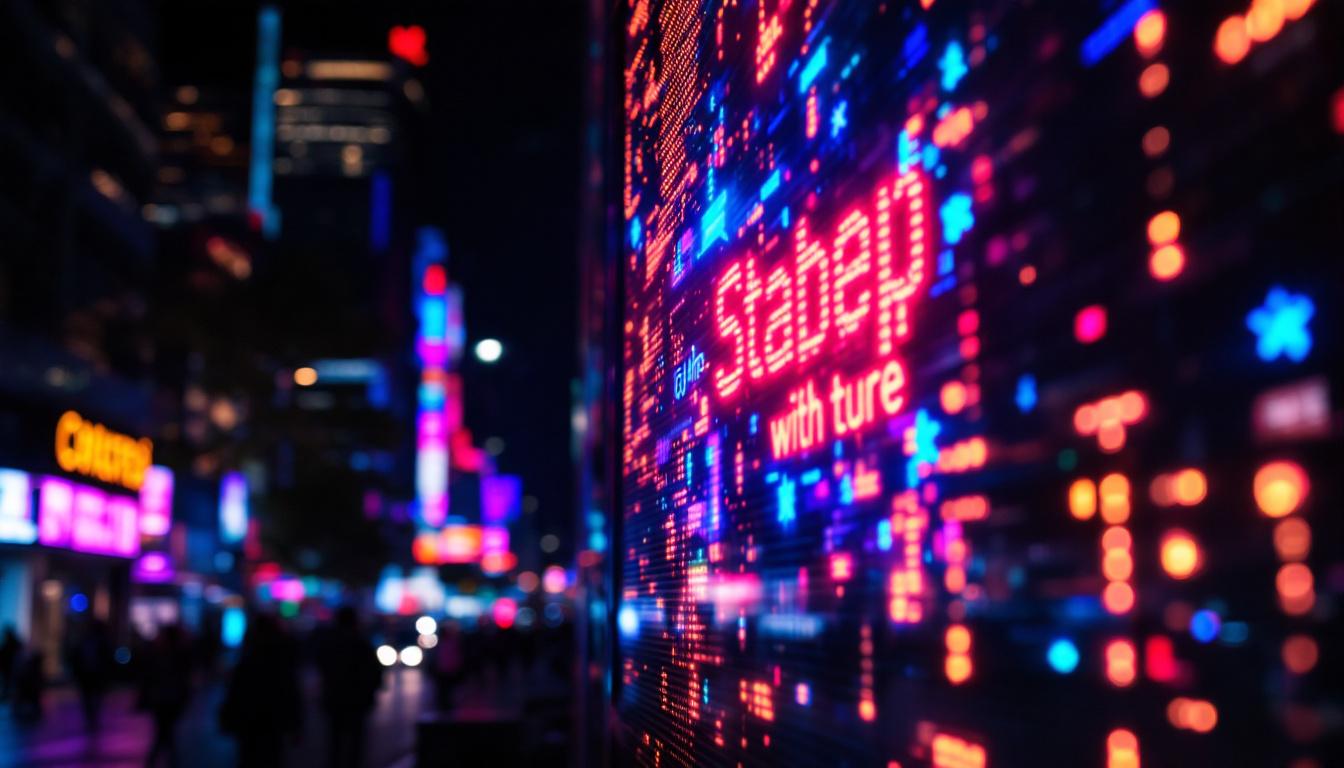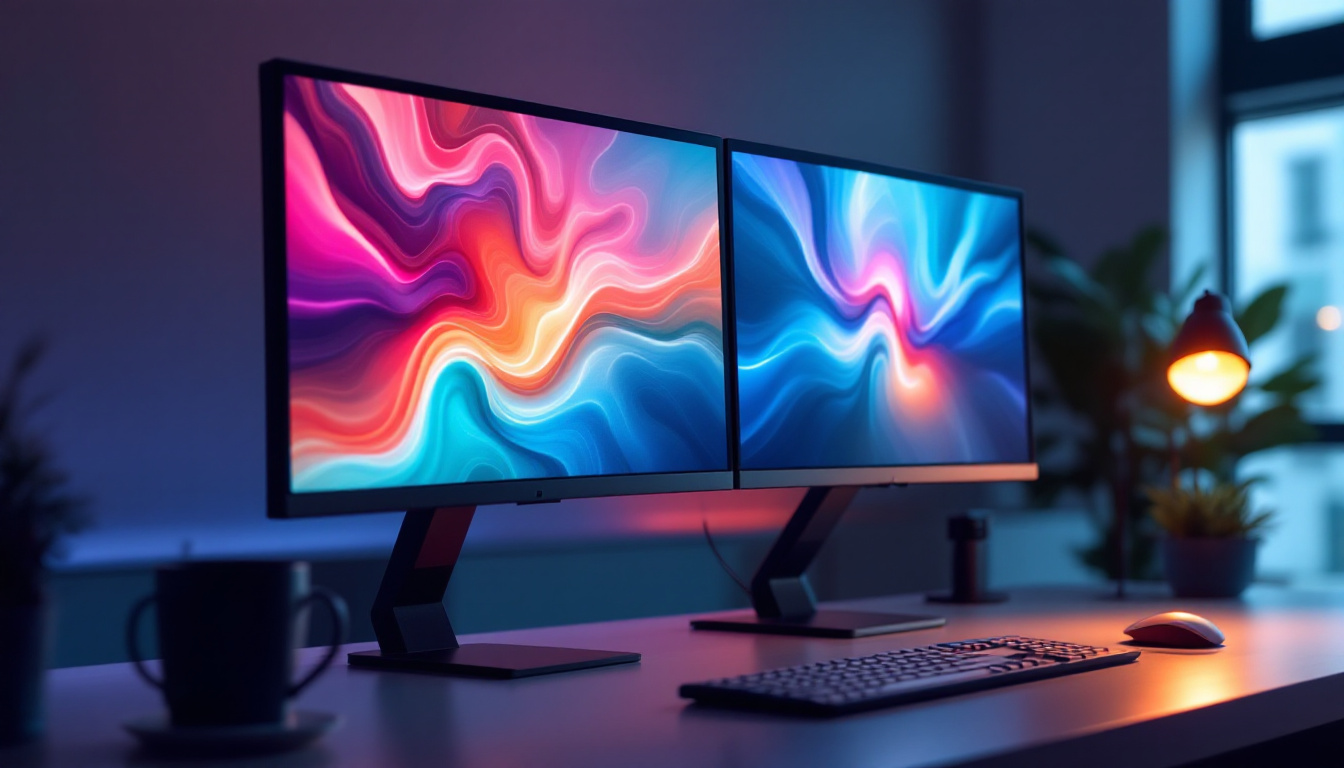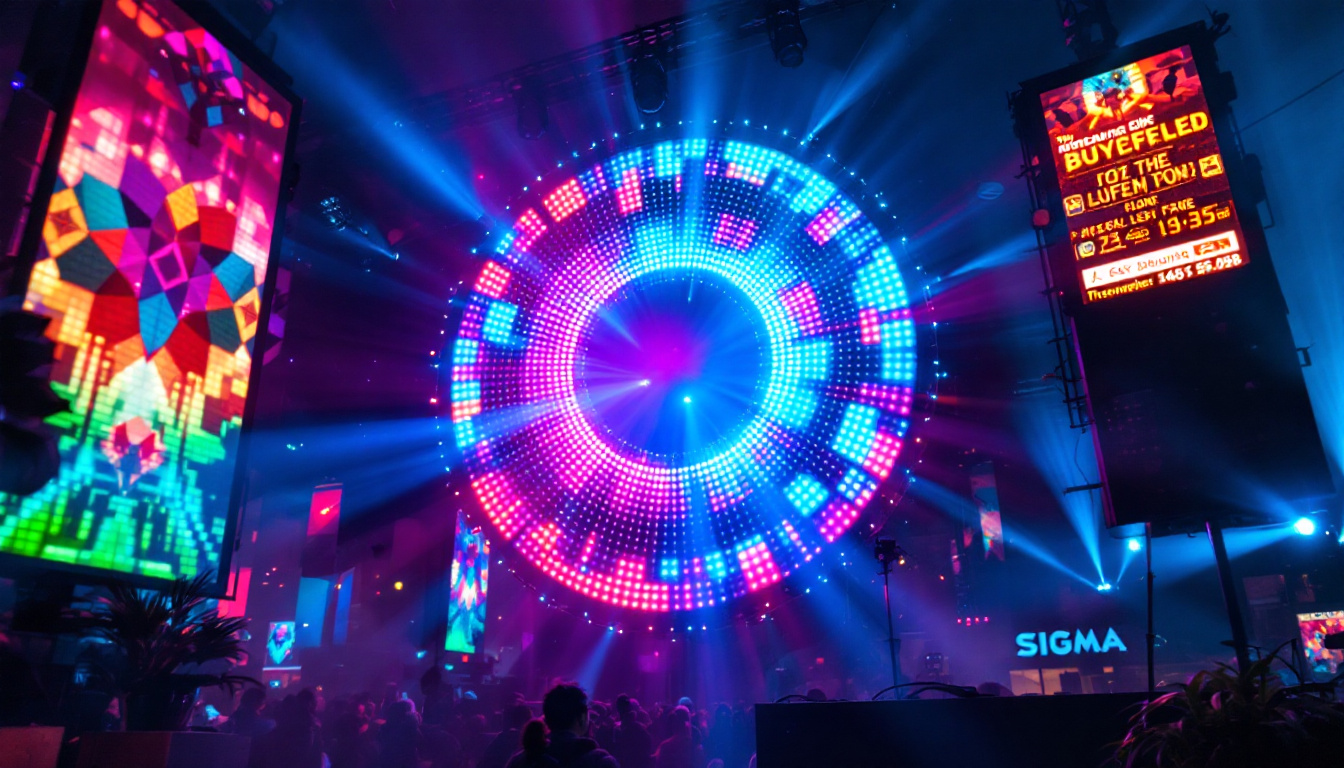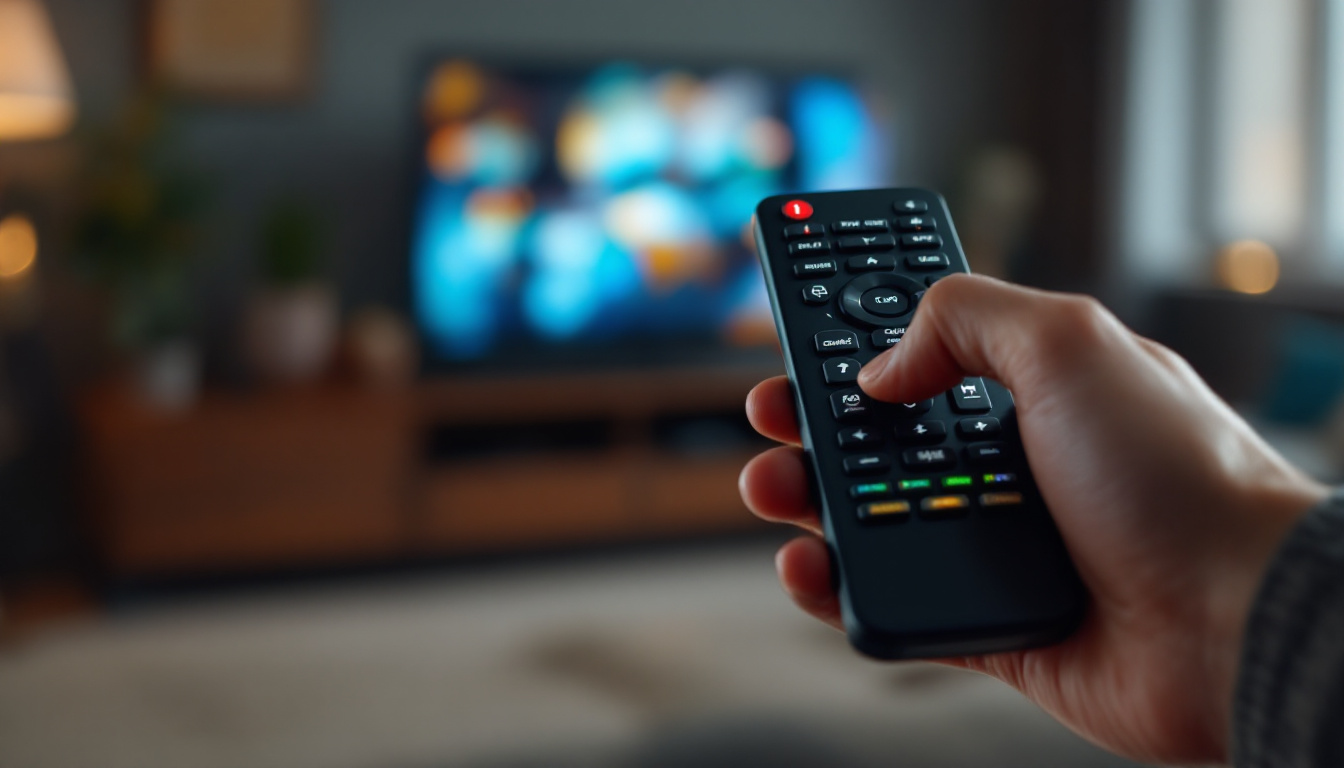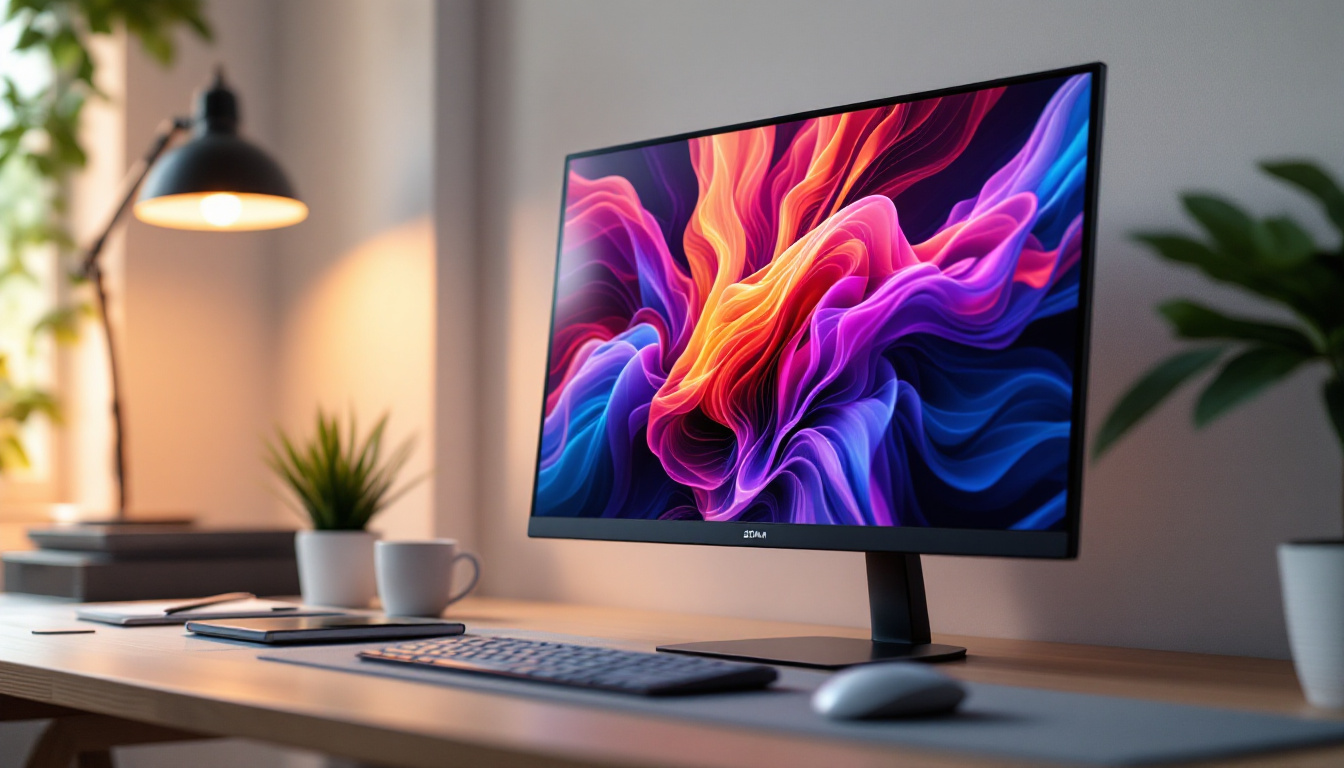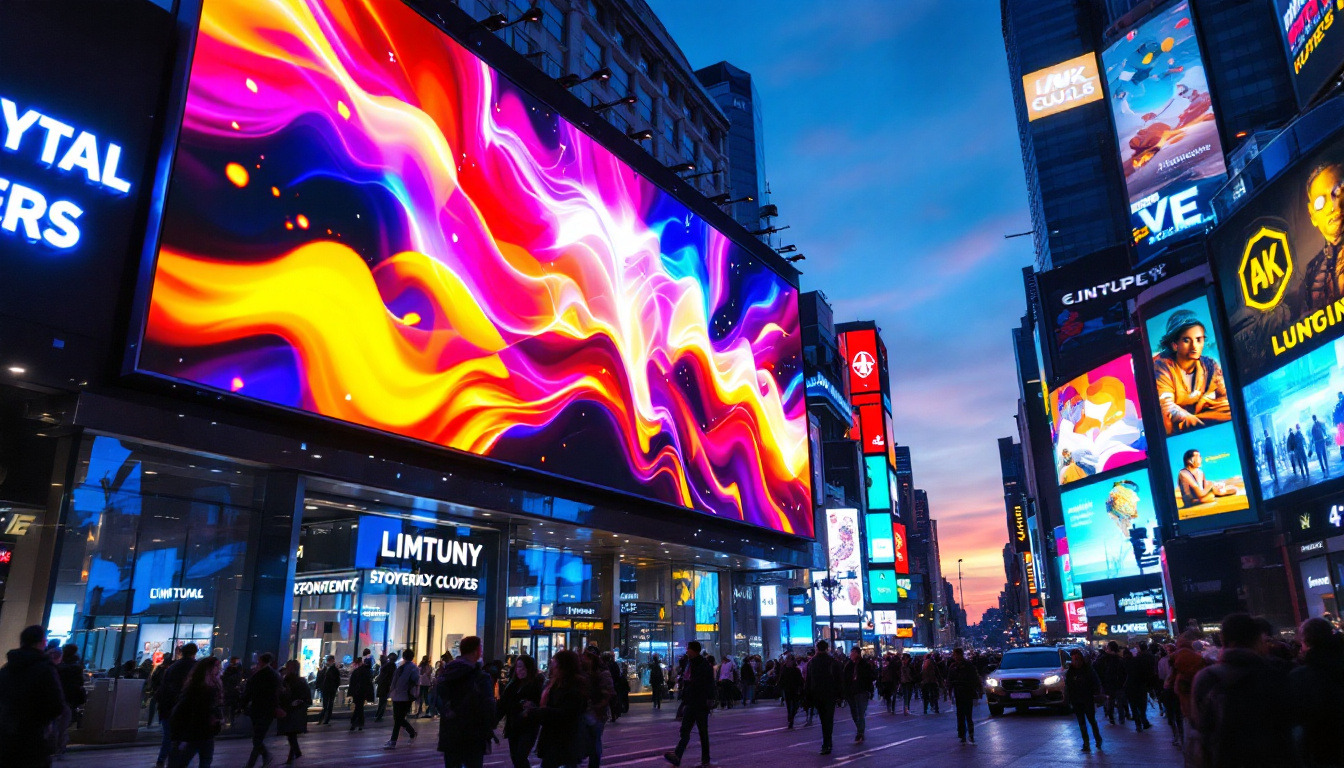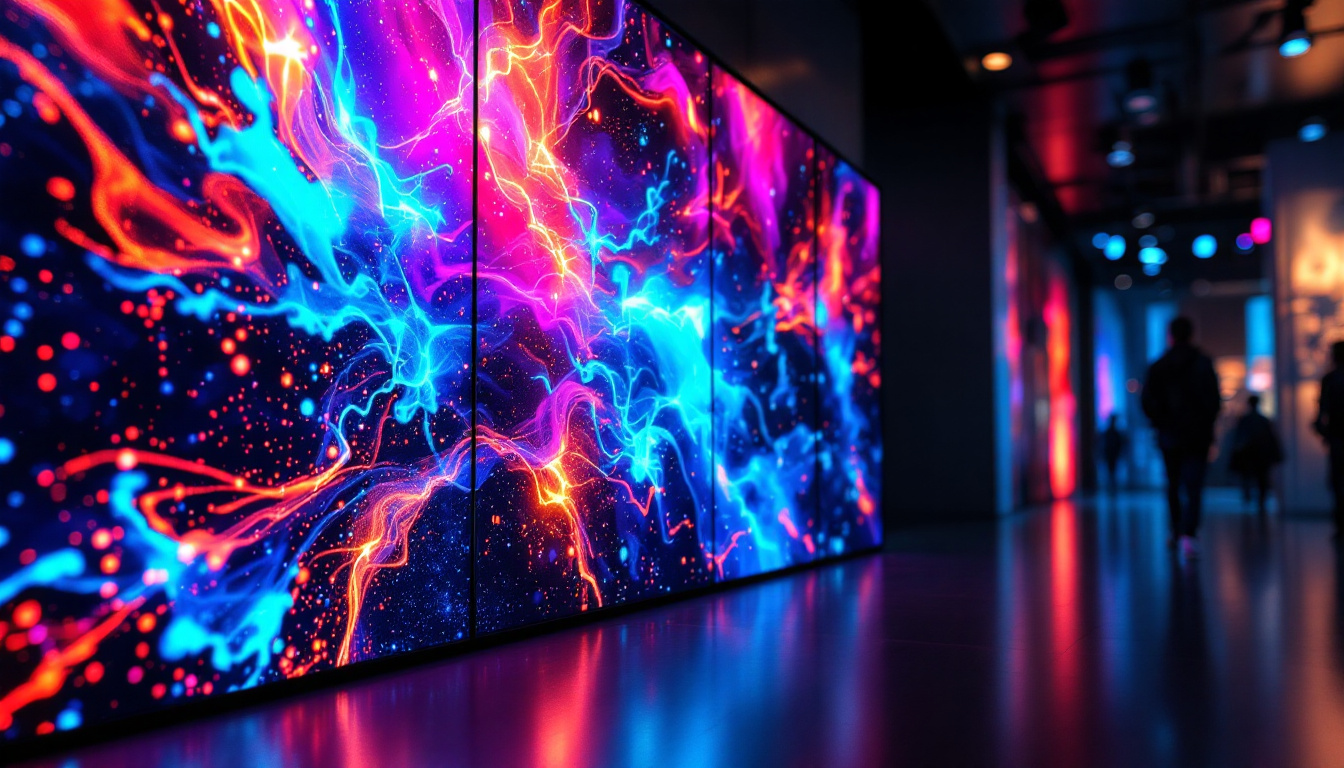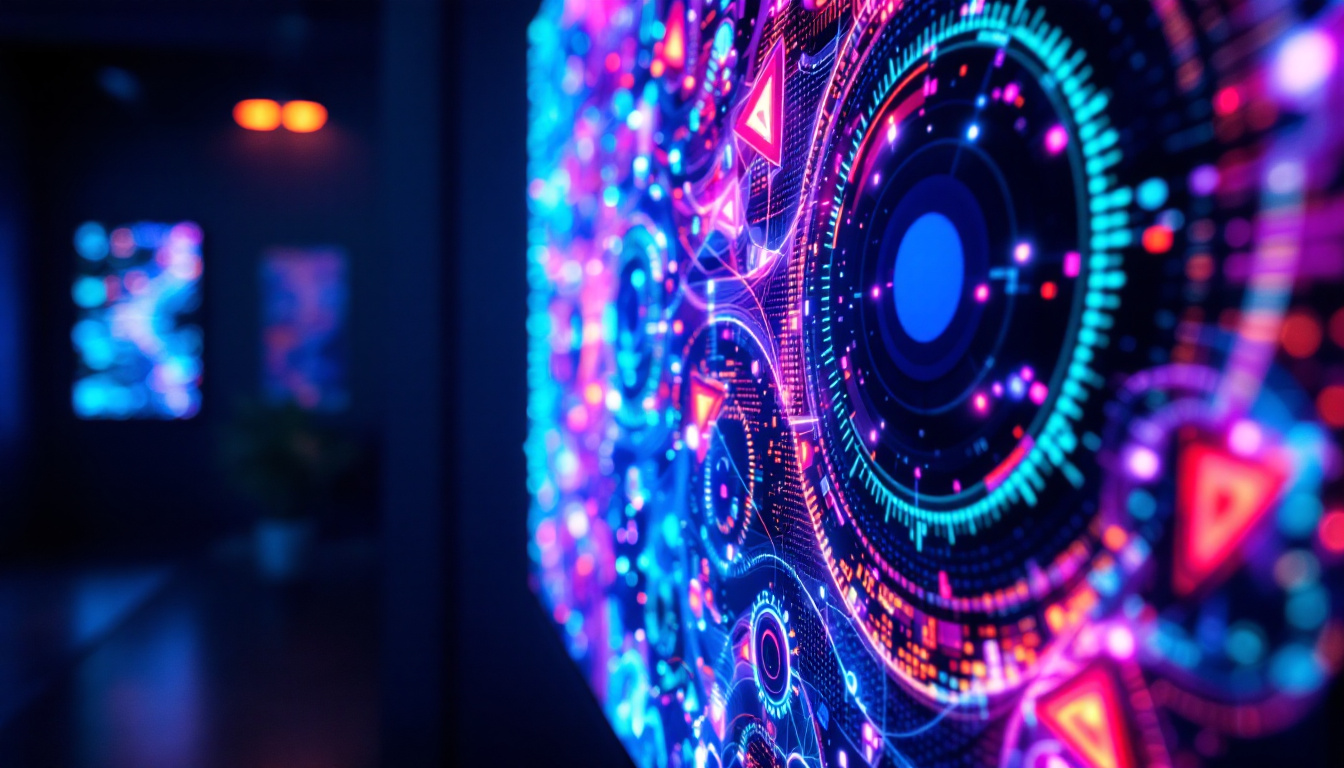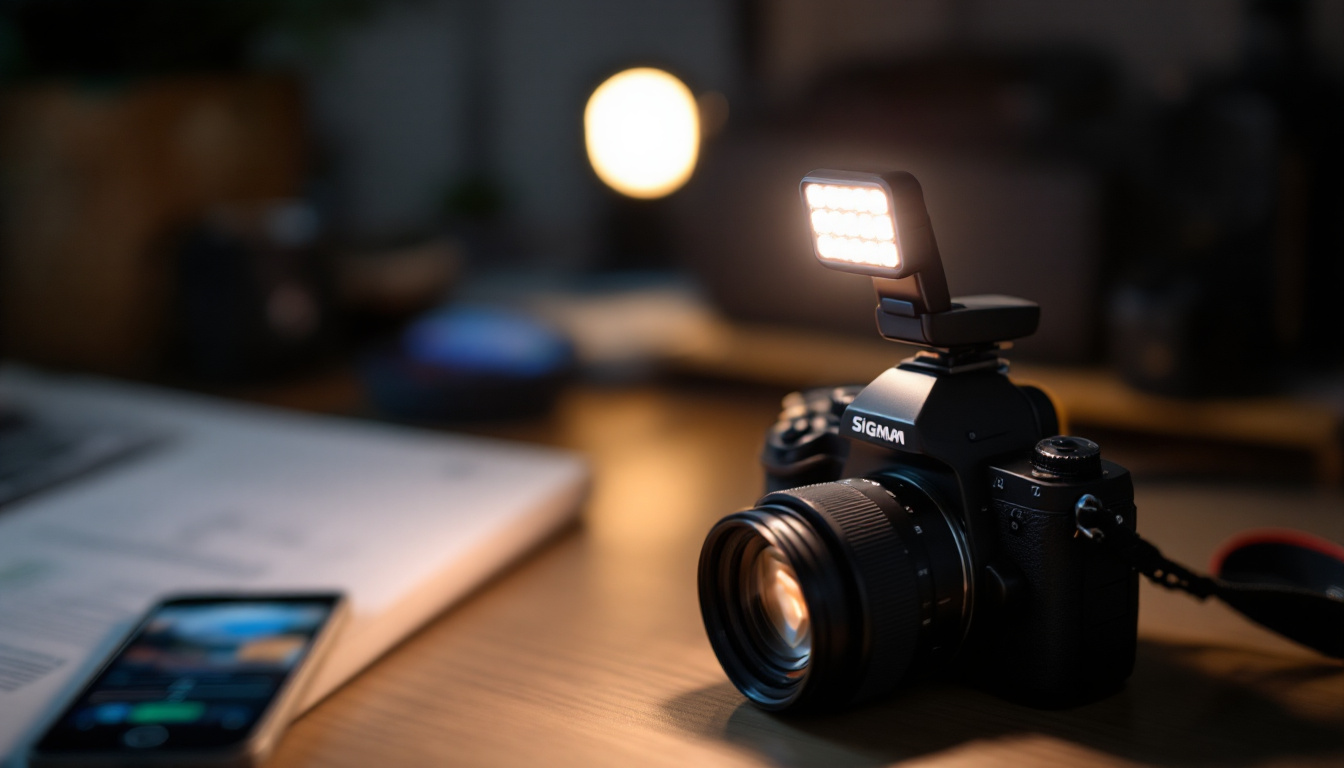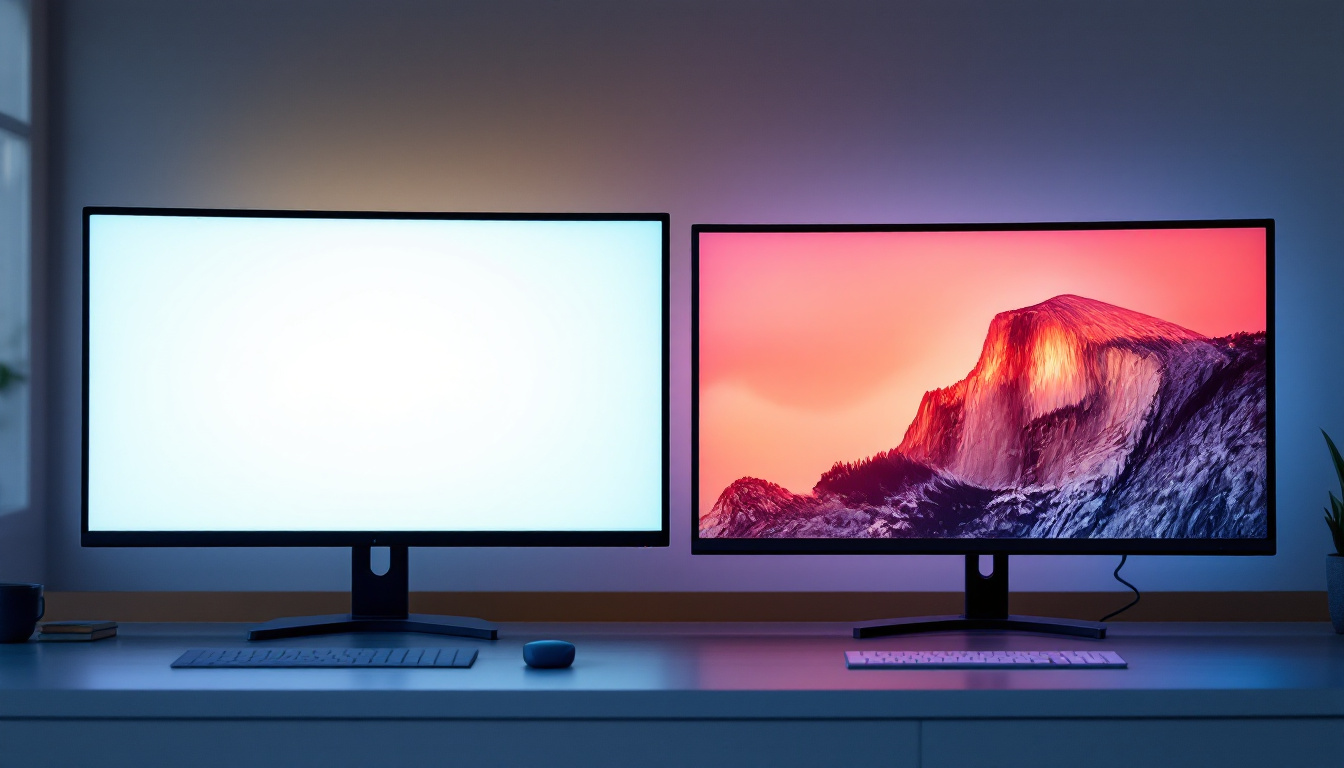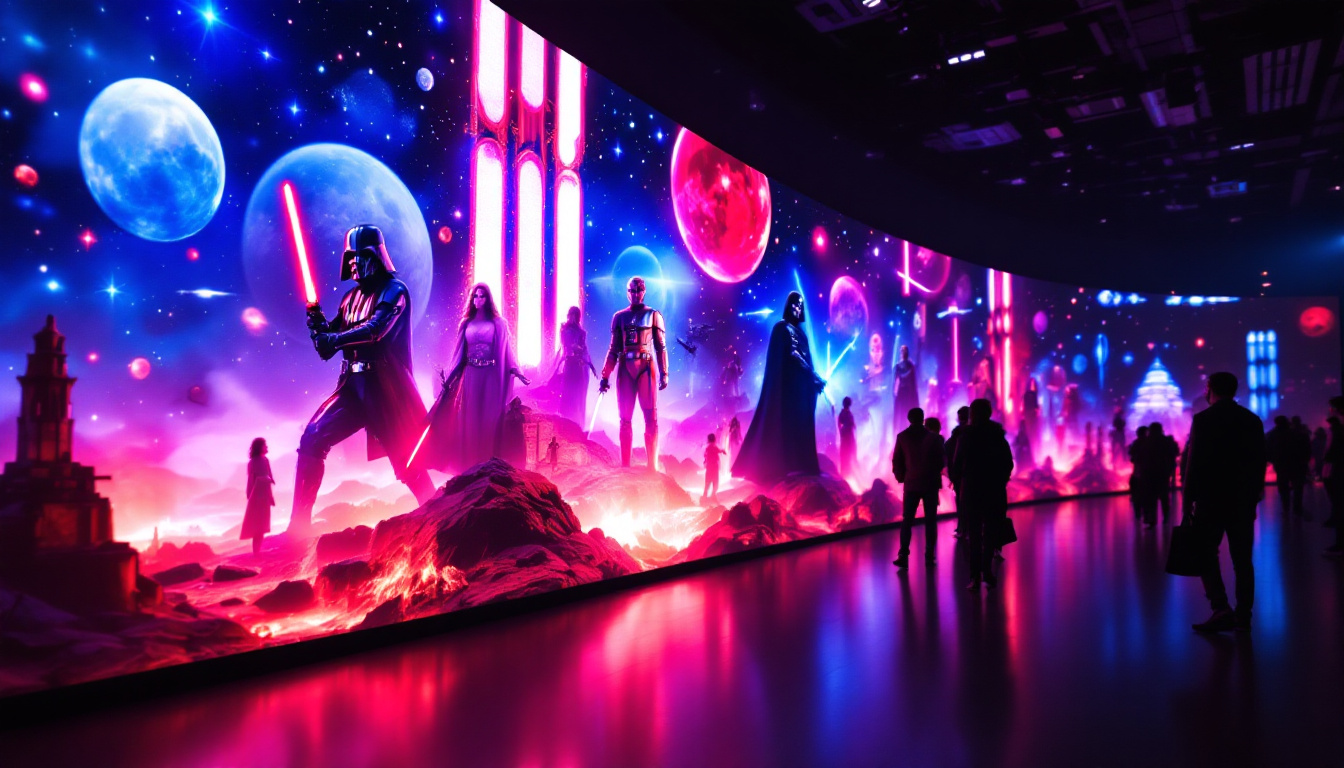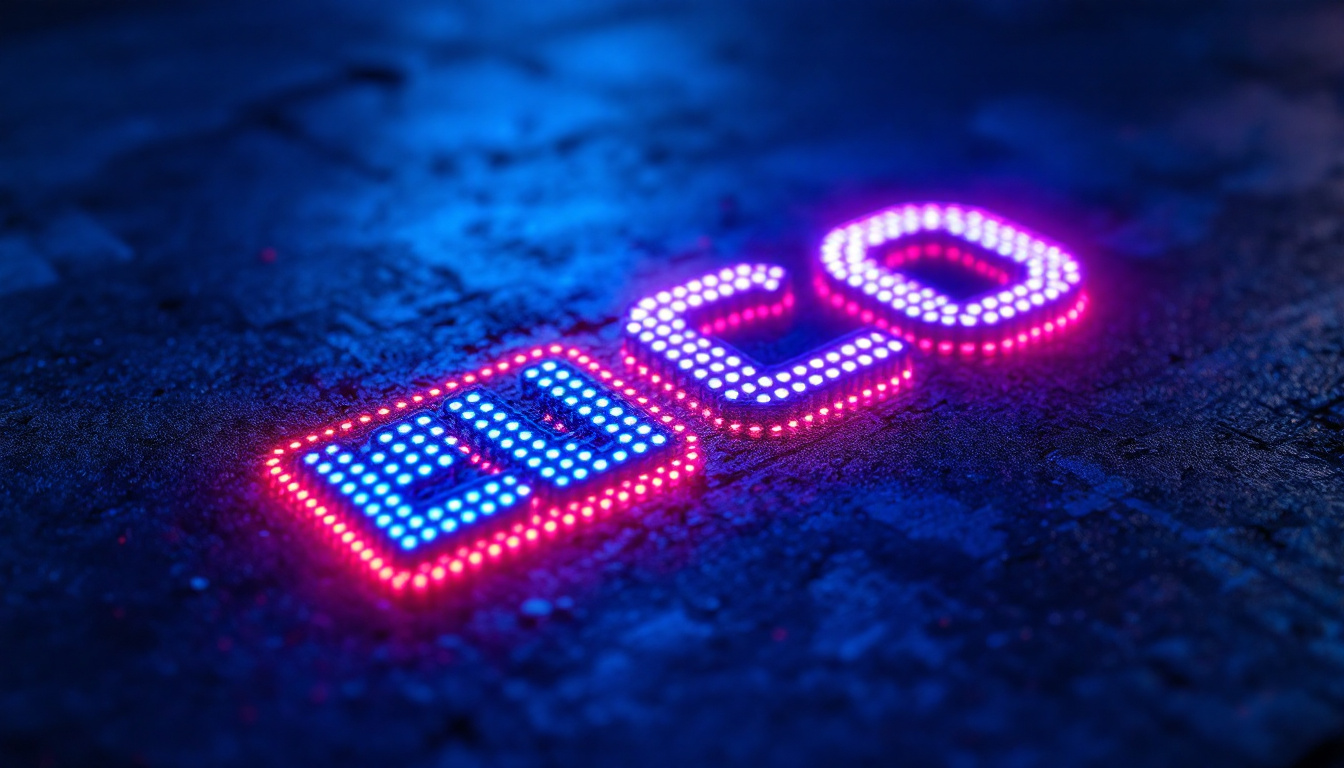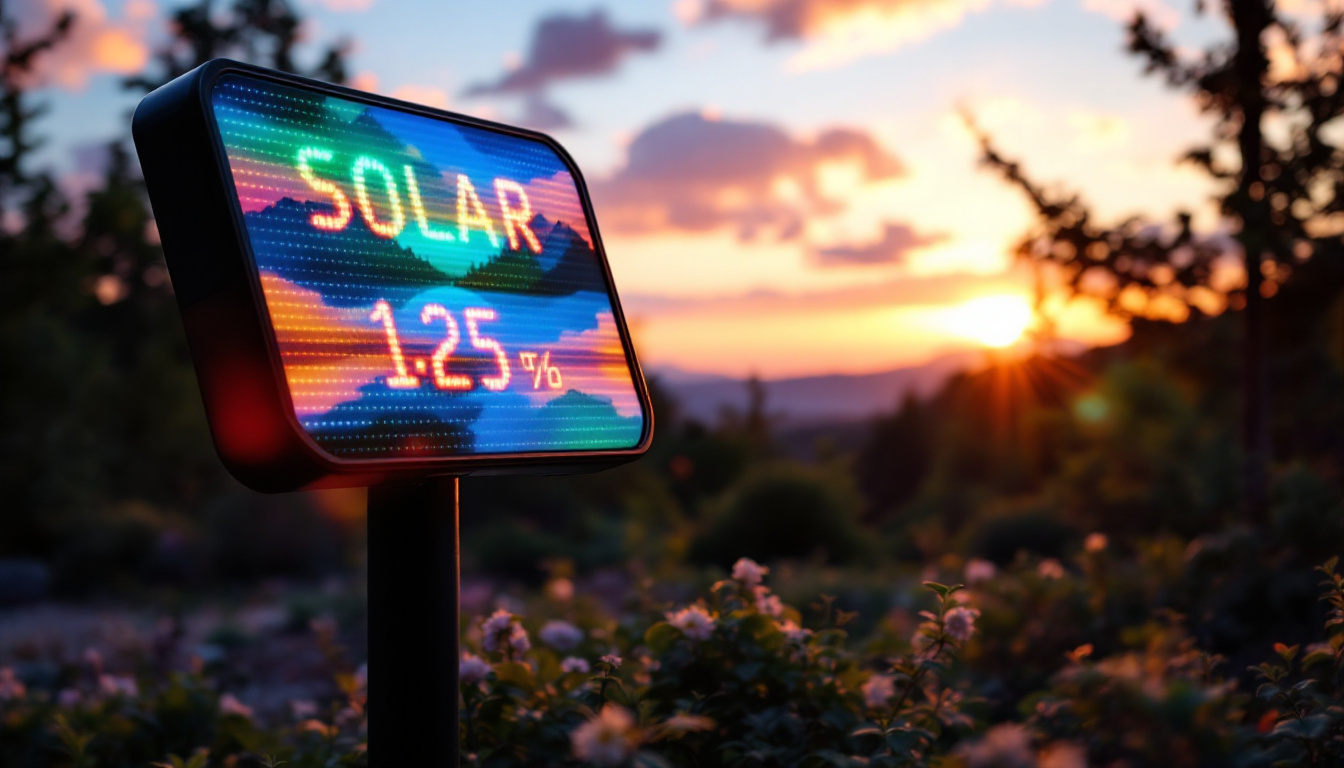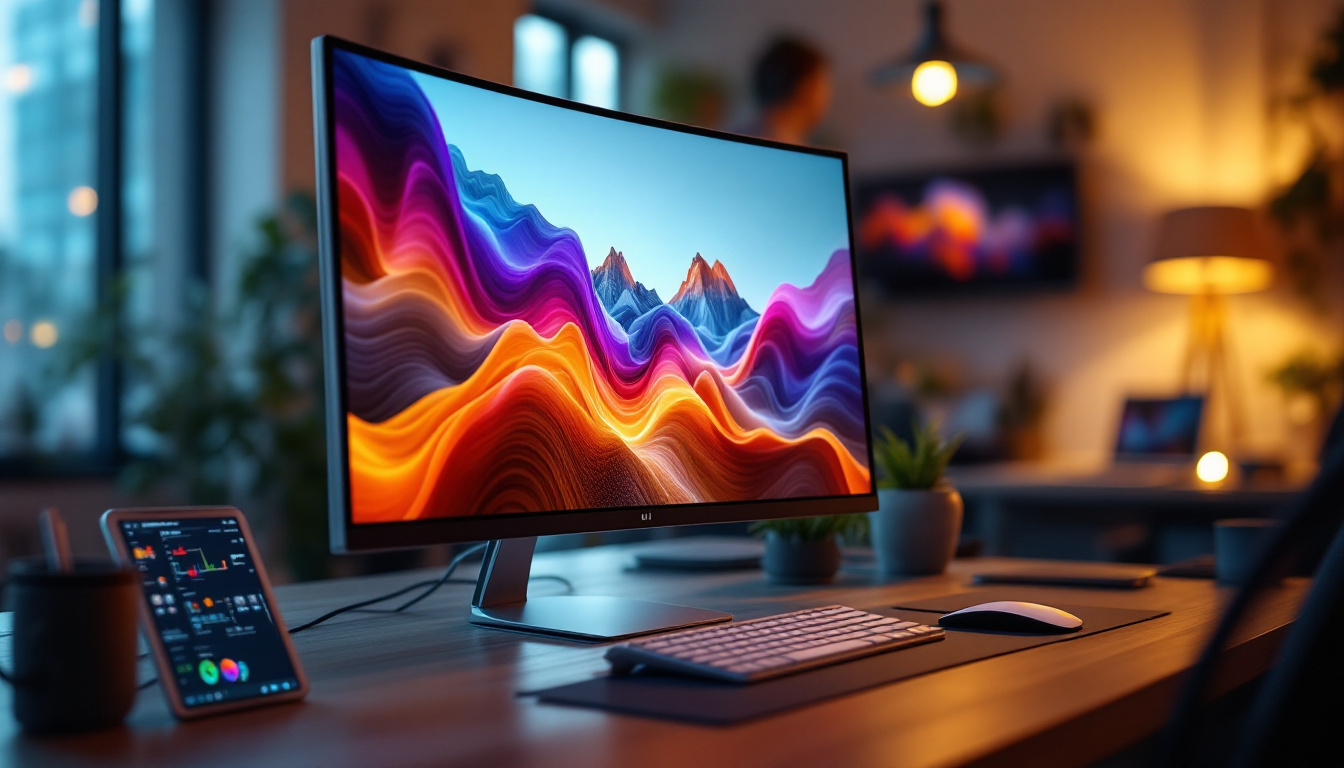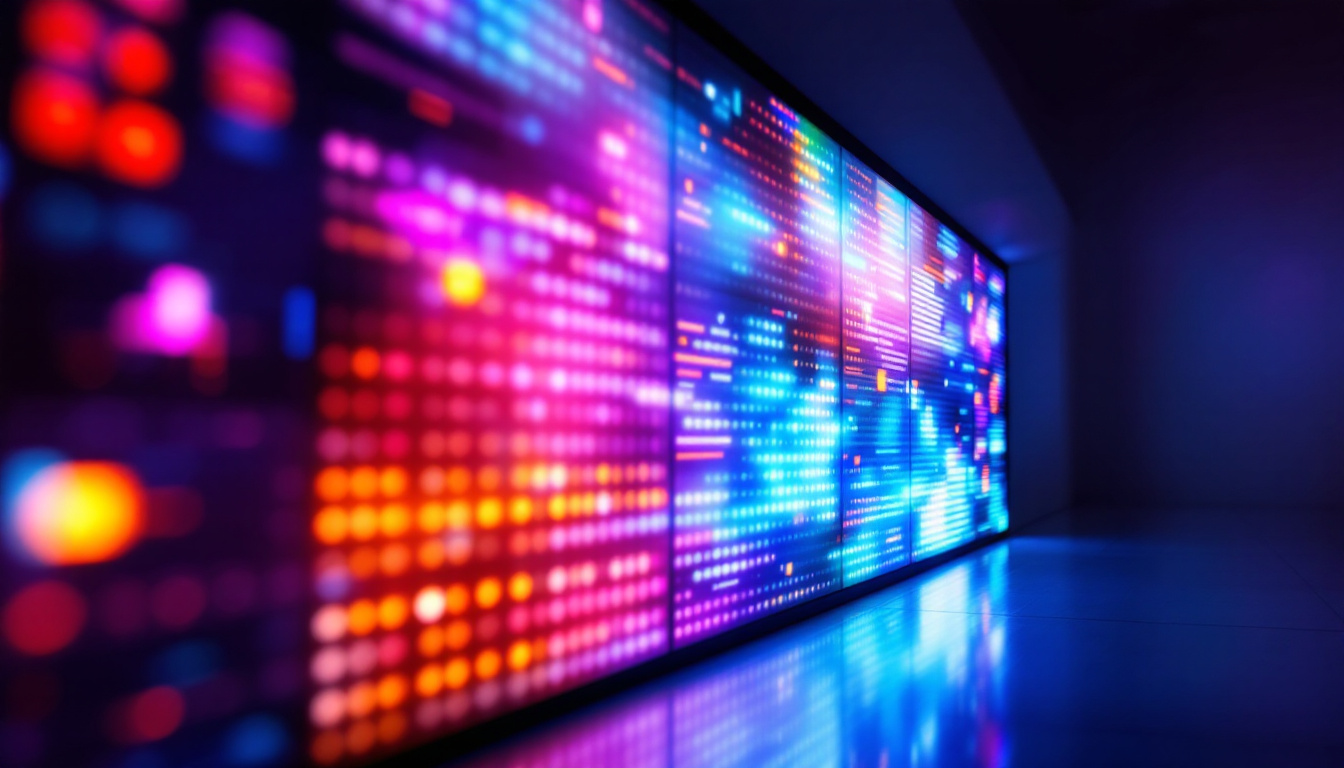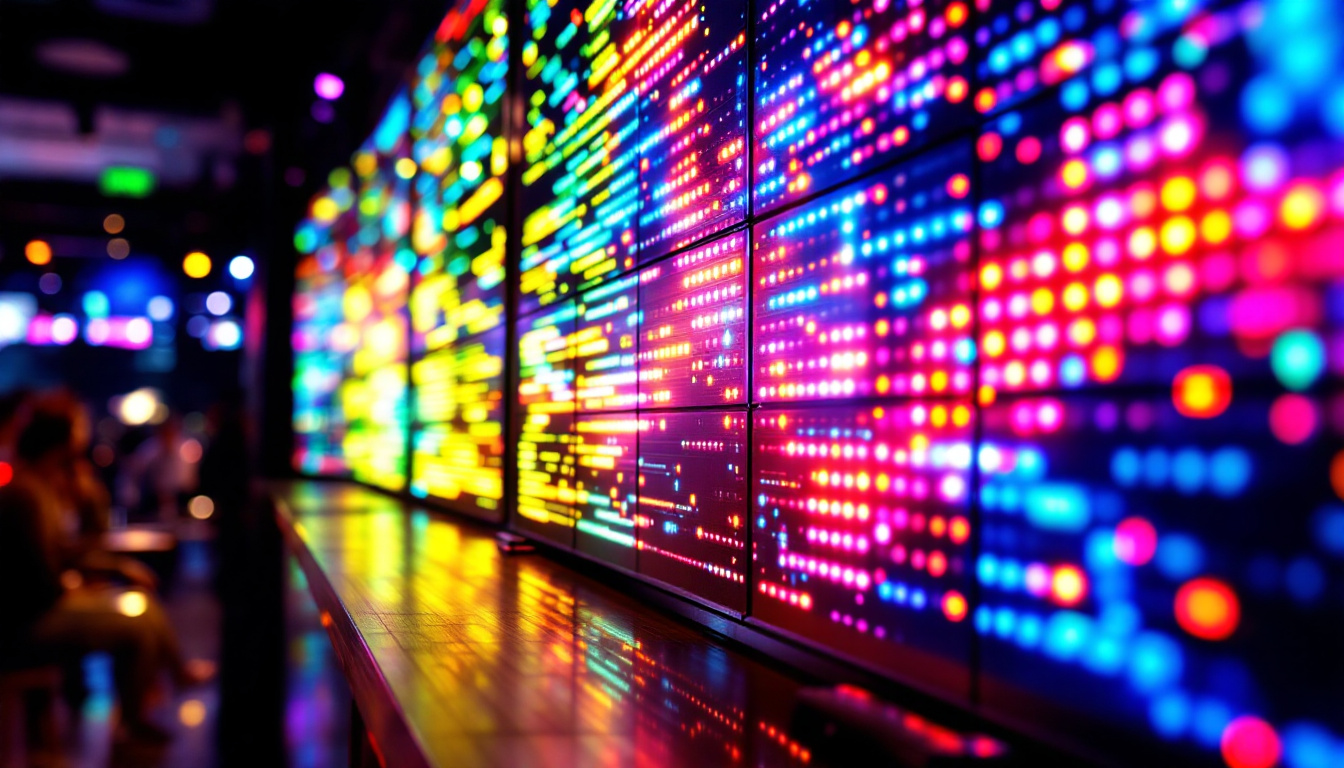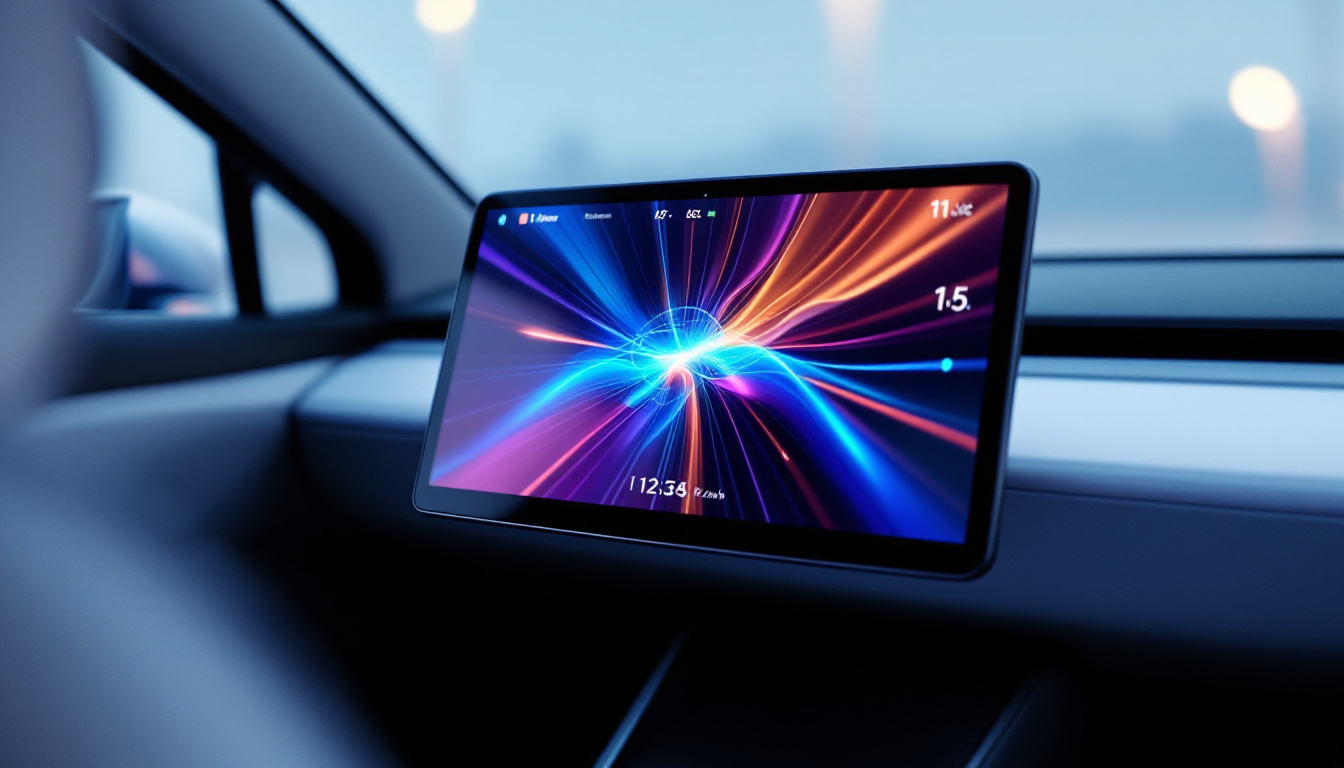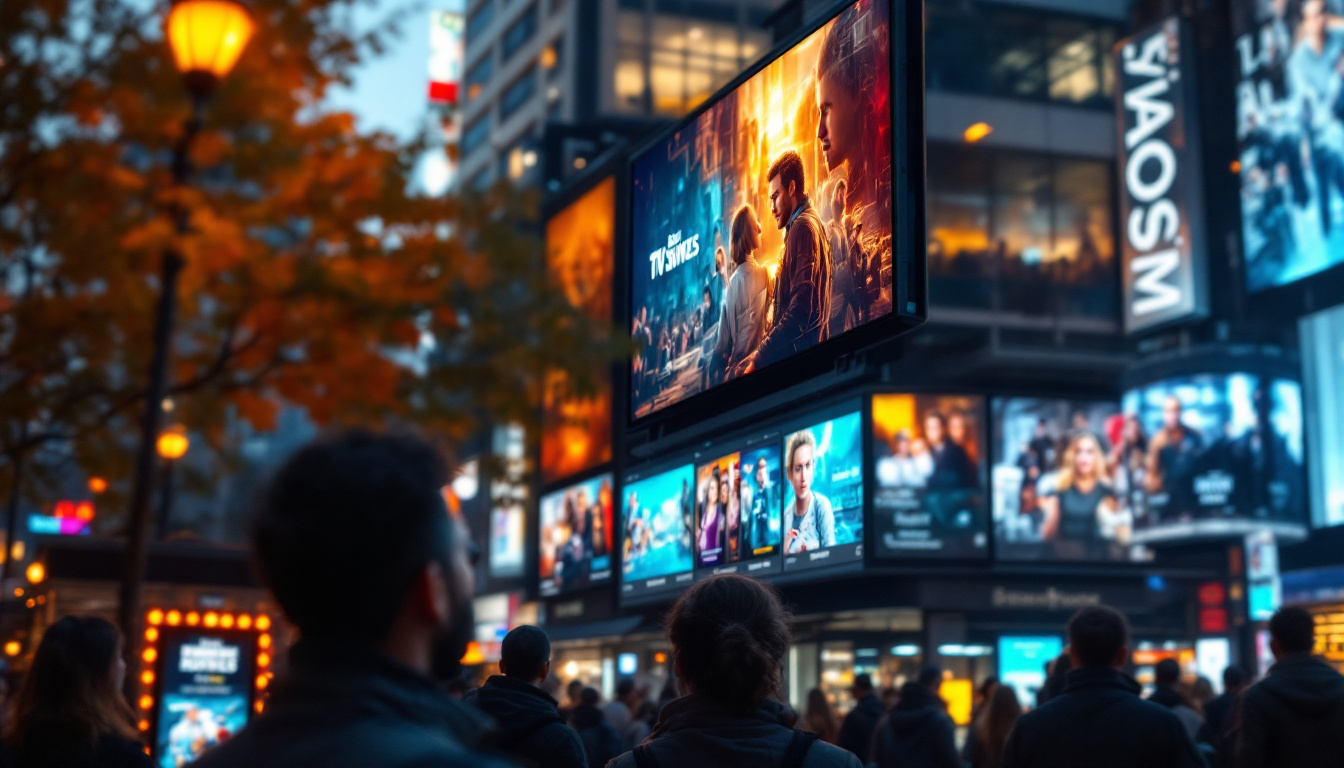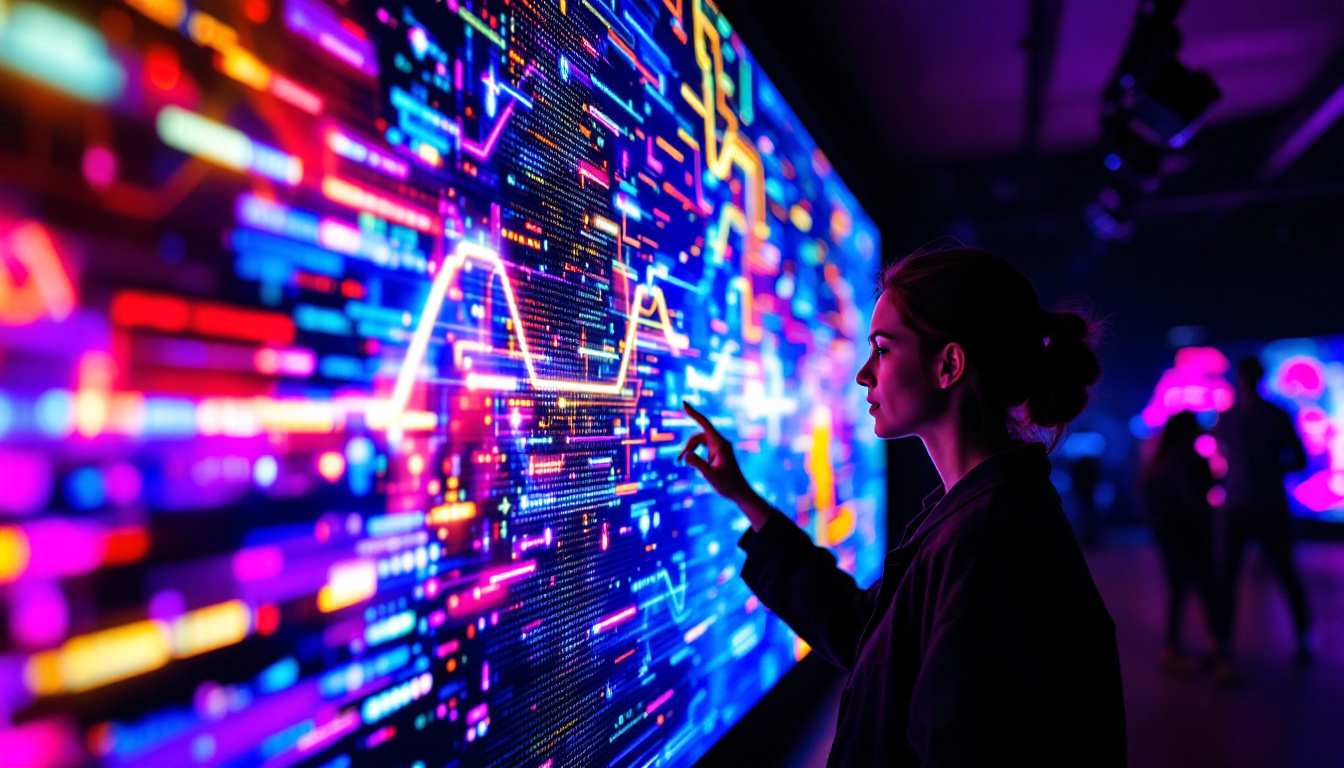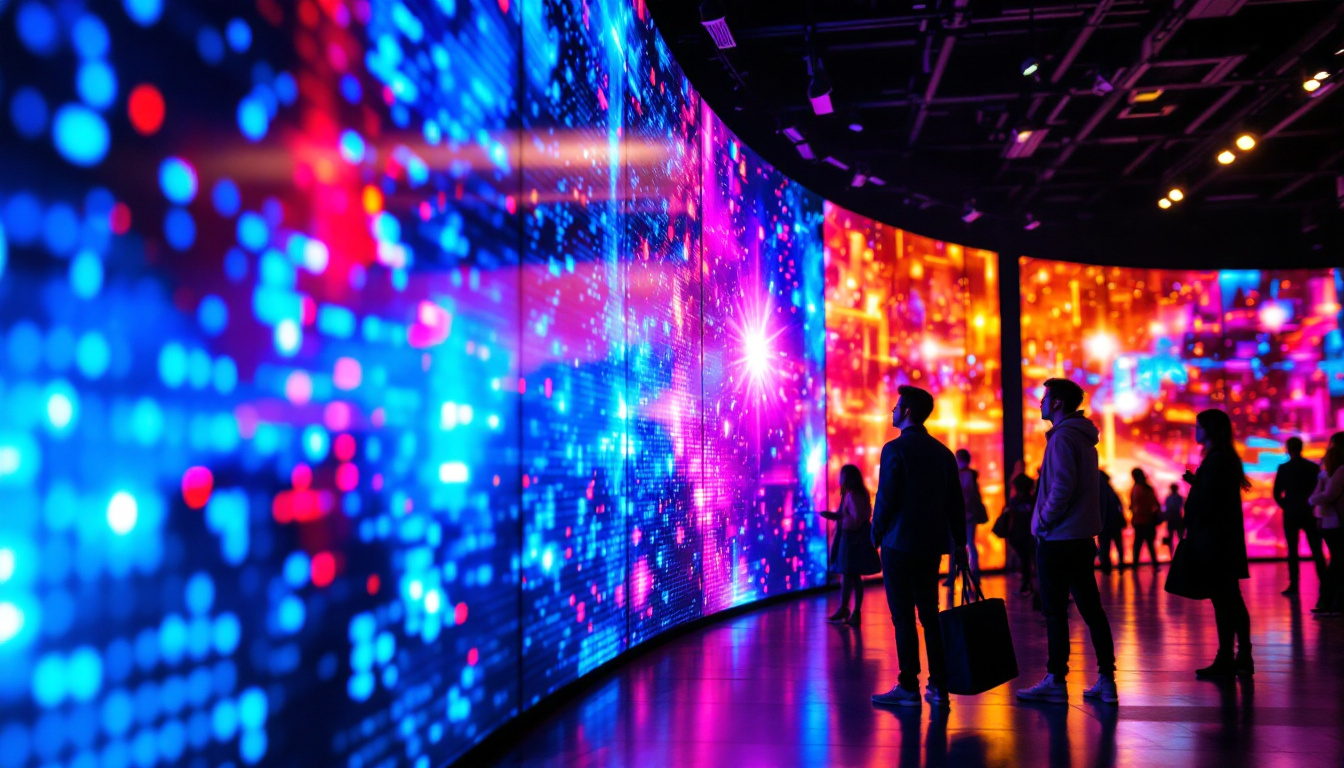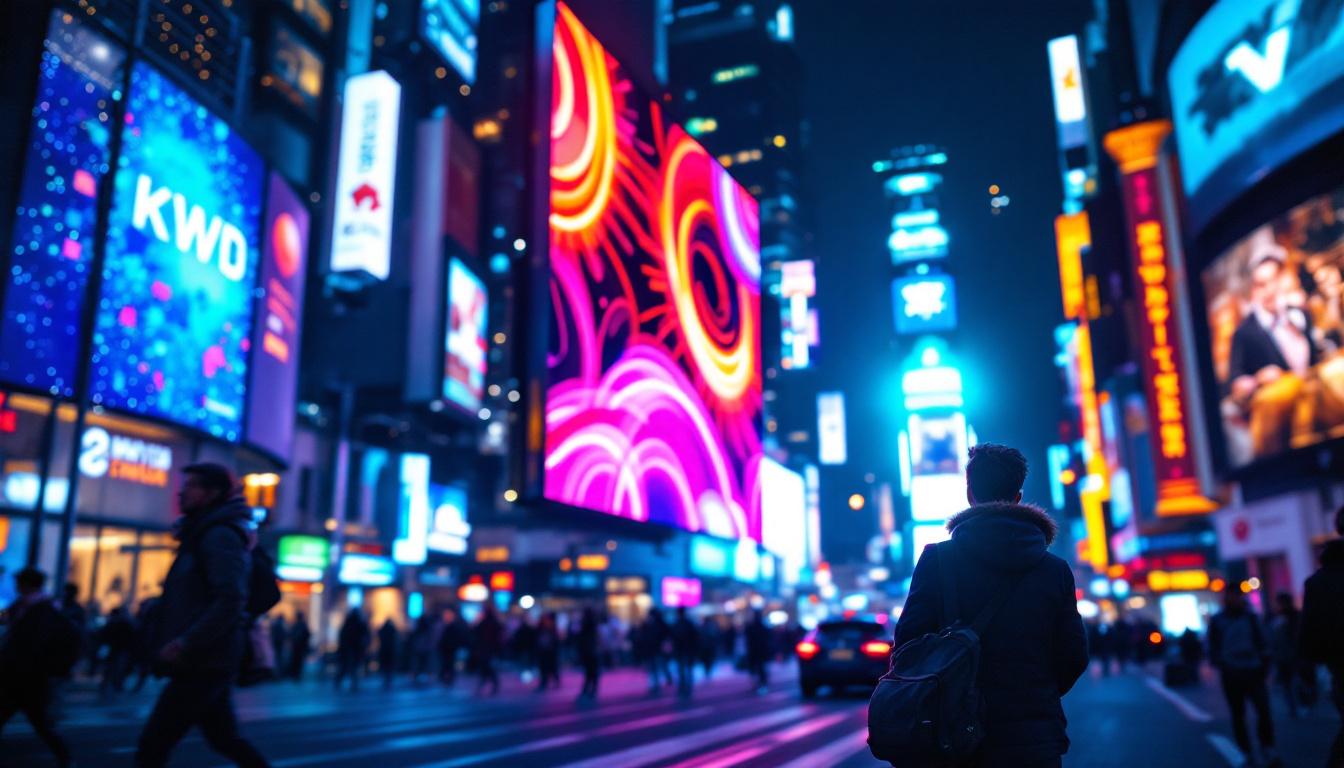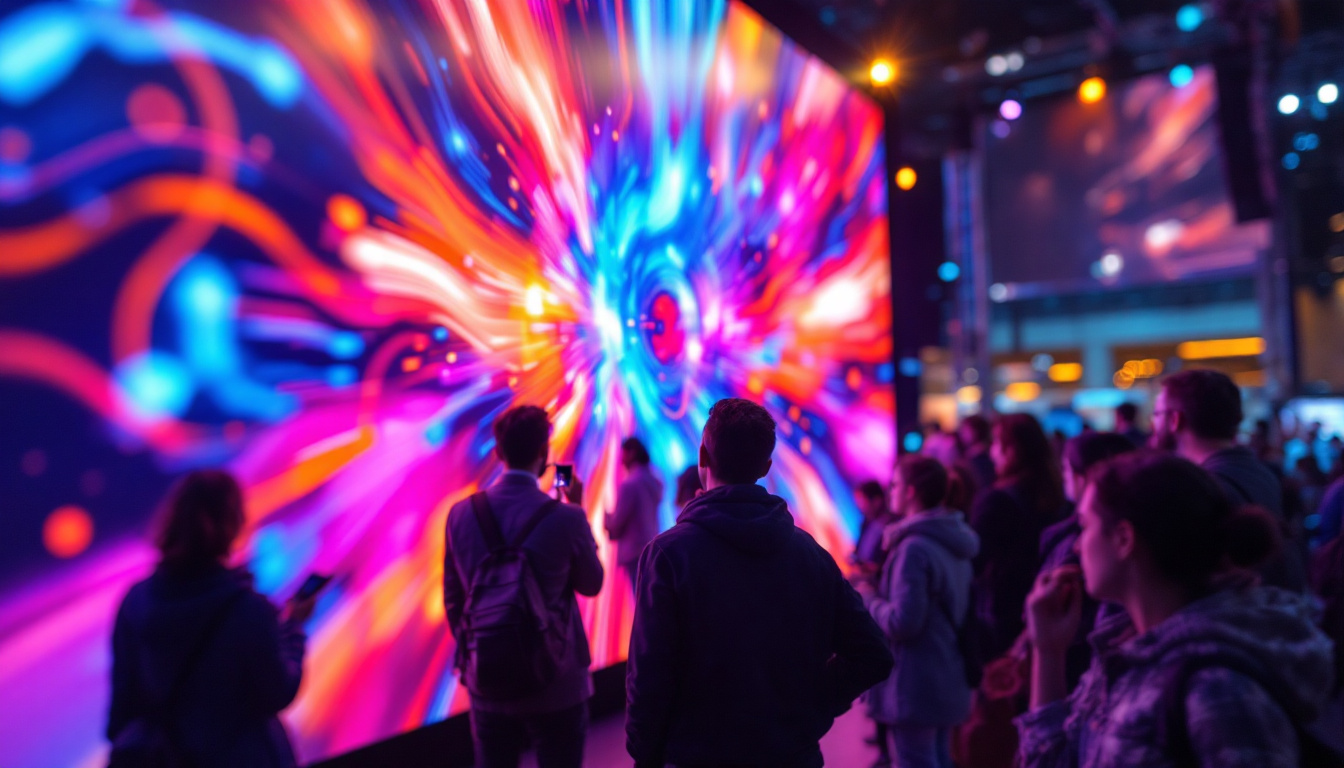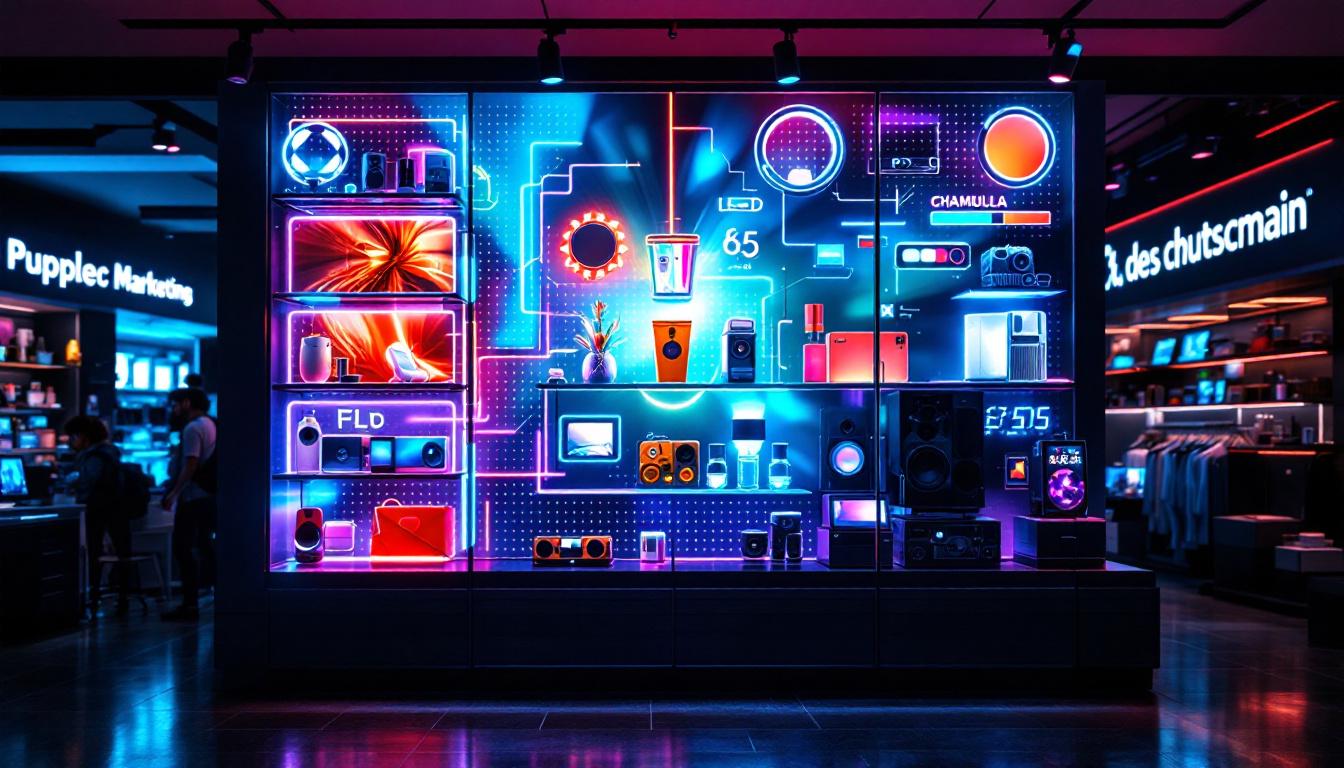In today’s modern world, the integration of technology into interior design has transformed the way spaces are utilized. One of the most striking innovations is the use of LED displays in interior walls. This article delves into the intricacies of building an interior wall featuring LED displays, exploring their benefits, installation processes, and design considerations.
Understanding LED Displays
LED displays have revolutionized visual communication, offering vibrant colors and high-resolution images that can captivate audiences. Unlike traditional displays, LED technology allows for thinner, lighter, and more energy-efficient solutions, making them ideal for interior wall applications. The technology behind LED displays has advanced significantly, enabling manufacturers to produce screens that not only deliver exceptional brightness but also boast improved color accuracy and contrast ratios. This evolution has made LED displays a preferred choice for businesses looking to enhance their branding and engage customers more effectively.
Types of LED Displays
There are several types of LED displays available, each suited for different applications. The most common types include:
- Direct View LED: These displays are composed of individual LED modules that create a seamless image. They are often used for large-scale installations, such as stadiums and concert venues, where the audience is spread out over a wide area.
- LED Video Walls: Comprising multiple screens, these walls can create a larger visual experience. They are perfect for events, retail environments, and corporate settings, allowing for dynamic content that can be easily updated to reflect current promotions or messages.
- Flexible LED Displays: These are designed to bend and conform to various shapes, allowing for creative installations that traditional displays cannot achieve. Their adaptability makes them ideal for unique architectural designs, such as curved walls or artistic installations that require a non-standard display format.
Benefits of Using LED Displays
Incorporating LED displays into interior walls offers numerous advantages:
- High Visibility: LED displays provide bright and clear images, ensuring visibility even in well-lit environments. This feature is particularly beneficial in retail settings, where capturing the attention of passersby is crucial for driving foot traffic.
- Energy Efficiency: Compared to traditional lighting, LED technology consumes significantly less power, making it a more sustainable option. This reduction in energy consumption not only lowers operational costs but also aligns with the growing emphasis on environmentally friendly practices.
- Versatility: These displays can be used for various purposes, including advertising, information dissemination, and entertainment. Their ability to display high-definition video and animations allows businesses to create engaging content that resonates with their target audience, enhancing the overall customer experience.
Moreover, LED displays are known for their durability and longevity, often lasting up to 100,000 hours with minimal maintenance. This reliability makes them a cost-effective investment for businesses looking to enhance their visual communication strategies. Additionally, the rapid advancements in LED technology have led to the development of smart displays that can integrate with various digital platforms, allowing for real-time updates and interactive content. This capability not only improves engagement but also provides businesses with valuable insights into customer behavior and preferences, further optimizing their marketing efforts.
Planning Your LED Display Installation
Before embarking on an installation project, careful planning is essential. Understanding the space, the intended use of the display, and the overall design aesthetic will guide the decision-making process.
Assessing the Space
Evaluating the space where the LED display will be installed is crucial. Factors to consider include:
- Size and Scale: The dimensions of the wall and the viewing distance will influence the size and resolution of the display needed.
- Lighting Conditions: Natural and artificial lighting can affect visibility. It’s important to choose a display that performs well in the specific lighting conditions of the space.
- Wall Structure: Ensure that the wall can support the weight and installation requirements of the LED display.
Additionally, consider the layout of the surrounding area. Are there any obstructions that might block the view? Will the display be viewed from multiple angles? Understanding the flow of foot traffic and the typical viewer’s position can help in determining the optimal placement for maximum visibility and impact. Furthermore, think about the integration of the display with existing decor and technology. A well-planned installation not only enhances functionality but also complements the overall environment.
Defining the Purpose
Understanding the primary purpose of the LED display will help in selecting the right type and features. Common purposes include:
- Advertising: Retail environments often use LED displays to showcase products and promotions.
- Information Sharing: corporate offices may utilize displays for announcements, schedules, and real-time data.
- Entertainment: Venues such as theaters and bars may employ LED walls to enhance the ambiance and engage patrons.
Moreover, it’s essential to consider the content that will be displayed. Will it be static images, videos, or dynamic content that changes frequently? The type of content will dictate the display’s resolution and refresh rate. For instance, high-definition displays are ideal for fast-moving visuals or intricate graphics, while simpler content may not require such advanced specifications. Additionally, think about how the display will be updated and maintained. A user-friendly content management system can streamline updates and ensure that the display remains fresh and relevant, keeping audiences engaged and informed.
Installation Process
The installation of an LED display involves several key steps, each requiring careful attention to detail to ensure a successful outcome.
Preparing the Wall
Before installation, the wall must be adequately prepared. This includes:
- Clearing the Area: Remove any obstacles and ensure the wall surface is clean and smooth.
- Reinforcing the Structure: Depending on the size of the display, additional support may be necessary to ensure stability.
- Electrical Considerations: Plan for the electrical requirements, ensuring that power sources are accessible and meet the display’s needs.
Additionally, it is crucial to assess the wall’s material and integrity. For instance, drywall may require different mounting techniques compared to concrete or brick surfaces. In some cases, it may be beneficial to consult with a structural engineer to evaluate whether the wall can support the weight of the display, especially for larger installations. Furthermore, considering the viewing angle and distance from the audience can also influence the wall selection, ensuring that the display is positioned for optimal visibility and impact.
Mounting the Display
Once the wall is prepared, the next step is to mount the LED display. This process typically involves:
- Using Mounting Brackets: Secure the display using appropriate brackets designed for the specific model.
- Leveling the Display: Ensure that the display is perfectly level to avoid distortion in the image.
- Connecting Cables: Properly connect all necessary cables, including power and data connections, to ensure functionality.
Moreover, it is essential to perform a thorough check of all connections before finalizing the installation. This includes ensuring that the cables are not only connected securely but also routed neatly to avoid any tripping hazards or interference with other equipment. Additionally, testing the display at this stage can help identify any issues with the image quality or connectivity, allowing for adjustments to be made before the installation is considered complete. It is also advisable to have a second person assist during the mounting process, as this can help ensure that the display is handled safely and positioned accurately, reducing the risk of damage or misalignment.
Design Considerations
Integrating an LED display into an interior wall requires thoughtful design considerations to enhance the overall aesthetic of the space.
Choosing the Right Location
The location of the LED display can significantly impact its effectiveness. Consider the following:
- High Traffic Areas: Placing displays in areas with high foot traffic can maximize visibility and engagement.
- Complementing Existing Decor: The display should harmonize with the surrounding design elements, enhancing rather than detracting from the space.
- Viewing Angles: Ensure that the display is positioned to be easily viewed from various angles, accommodating different audience placements.
Content Strategy
The content displayed on the LED wall is just as important as the installation itself. A well-thought-out content strategy includes:
- Dynamic Visuals: Use high-quality images and videos that capture attention and convey the intended message effectively.
- Regular Updates: Keep content fresh and relevant by updating it regularly, ensuring that viewers remain engaged.
- Interactive Elements: Consider incorporating interactive content that encourages audience participation and enhances the viewing experience.
Maintenance and Support
To ensure the longevity and optimal performance of LED displays, regular maintenance is essential. This includes both technical support and physical upkeep.
Regular Inspections
Conducting regular inspections can help identify potential issues before they become significant problems. Key aspects to monitor include:
- Pixel Health: Check for dead pixels or color discrepancies that may affect image quality.
- Electrical Connections: Ensure that all connections remain secure and free from damage.
- Cleanliness: Keep the display surface clean to maintain clarity and brightness.
Technical Support
Having access to technical support is crucial for addressing any issues that may arise. Consider the following:
- Manufacturer Support: Ensure that the manufacturer offers reliable support and warranty options for the display.
- On-Site Technicians: Depending on the scale of the installation, having on-site technicians available for troubleshooting can be beneficial.
- Training for Staff: Provide training for staff members on basic troubleshooting and maintenance procedures to minimize downtime.
Conclusion
Building an interior wall with an LED display is a multifaceted process that combines technology, design, and strategic planning. By understanding the types of LED displays available, carefully planning the installation, and considering design elements, businesses can create impactful visual experiences that engage audiences and enhance their environments.
As technology continues to evolve, the possibilities for LED displays in interior design are limitless. With proper maintenance and support, these displays can serve as dynamic focal points that transform spaces, making them more interactive and visually appealing.
In the end, the integration of LED displays into interior walls not only meets the demands of modern aesthetics but also elevates the functionality of spaces, paving the way for innovative design solutions in various settings.
Discover LumenMatrix LED Display Solutions
Ready to elevate your space with the latest in LED display technology? LumenMatrix is at the forefront of creating immersive environments with our comprehensive range of LED display solutions. From vibrant indoor walls to dynamic outdoor displays, our innovative products are designed to captivate and engage. Experience the future of visual communication and transform your space into a beacon of interaction and allure. Check out LumenMatrix LED Display Solutions today and bring your vision to life.


